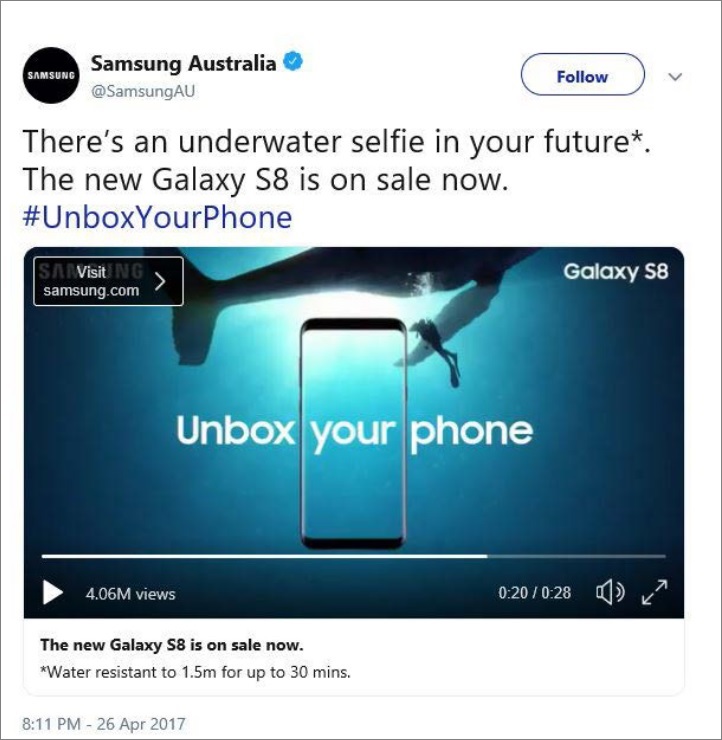Samsung Australia will pay a $14 million fine for misleading consumers about how water resistant its phones were in an advertising campaign.
The ads, shown online and in Samsung stores between 2016 and 2018, suggested Samsung Galaxy phones could withstand submersion in water.
Consumers quickly discovered their phones would become damaged or stop working after going in water and notified the Australian Competition and Consumer Commission (ACCC).
“We reviewed hundreds of complaints from consumers who reported they experienced issues with their Galaxy phones after it was exposed to water and, in many cases, they reported their Galaxy phone stopped working entirely,” ACCC Chair Gina Cass-Gottlieb said in a statement.
“Samsung Australia’s water resistance claims promoted an important selling point for these Galaxy phones.
“Many consumers who purchased a Galaxy phone may have been exposed to the misleading ads before they made their decision to purchase a new phone.”
The fine finalises an action brought to the Federal Court in July 2019.
Samsung’s marketing campaign had graphics of phones bobbing up and down in and being splashed with water, along with social media posts and blog posts that directly talked up the water resistance features of its phones.
“There’s an underwater selfie in your future,” one ad from 2017 read. “The new Galaxy S8 is on sale now.”
But if you took a selfie in the pool and went to charge your phone while it was still wet, there was a not-insignificant chance the charging port could corrode, severely damaging the device.
The issue affected the Samsung Galaxy S7, S7 Edge, A5 (2017), A7 (2017), S8, S8 Plus and Note 8.

An ad from 2017 that was part of Samsung's Galaxy campaign. Image: supplied
Samsung was aware of the corrosion issue and tried to offset the chances of it happening, including a “warning message” if an affected phone was plugged in while it still had water in the port.
“The seven smartphones models were tested extensively to assess their water resistance capabilities, prior to launch, including tests in pool and sea water,” Samsung said.
“The phones also had inbuilt systems to minimise the prospect of corrosion if the phones were attempted to be charged while water remained in the charging port.”
Samsung phones made after March 2018 are not known to have the same problem.
The ACCC took issue with the fact Samsung was aware of the problem with its supposedly water-resistant phones yet it carried on with its advertising campaign regardless.
“Samsung Australia’s ads promoting its Galaxy phones featured people using their phones in pools and sea water, despite the fact that this could ultimately result in significant damage to the phone,” Cass-Gottlieb said.
“This penalty is a strong reminder to businesses that all product claims must be substantiated.”
Anyone who bought one of the affected Galaxy phones and found the charging port was damaged after it went into pool or sea water should get in contact with Samsung Australia.










